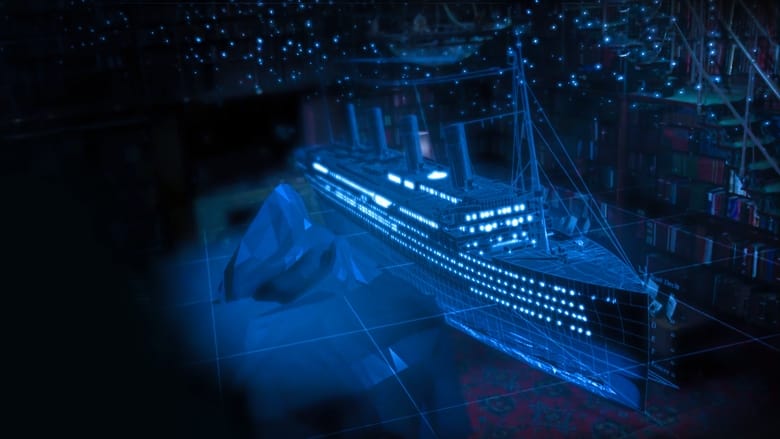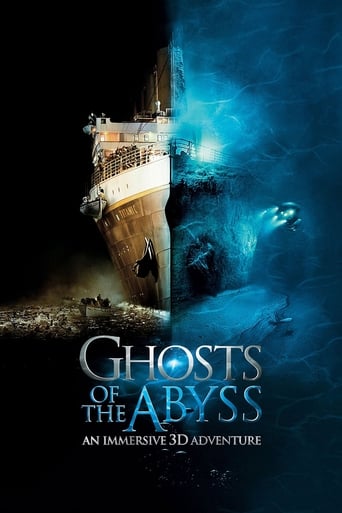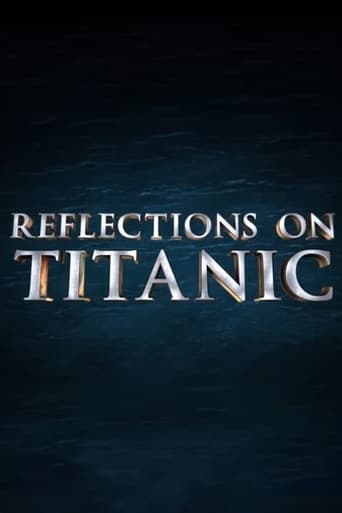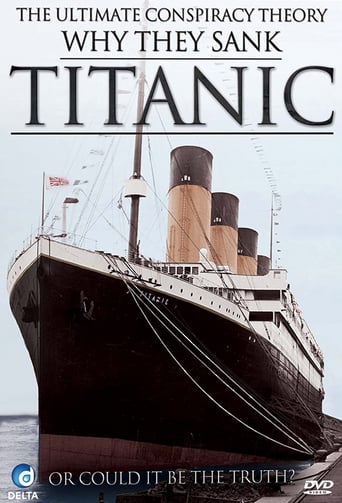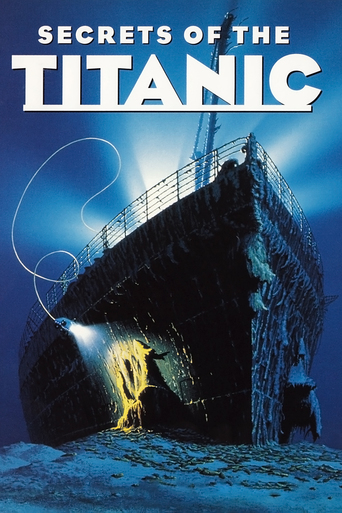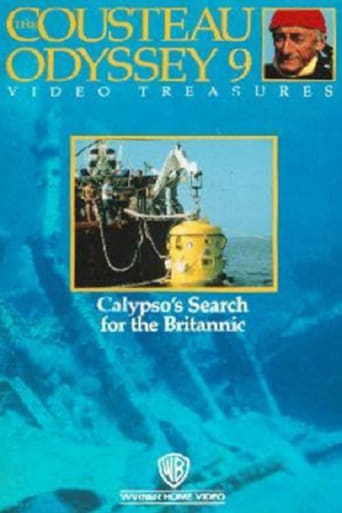Titanic's Final Mystery (2012)
The sinking of the RMS Titanic remains one of the most enduring and mysterious tragedies of the 20th century. For decades, investigators and amateurs alike have floated theories for why it occurred and who was to blame for the extraordinary loss of life, but no one answer could fully explain what happened. Until now. To mark the 100th anniversary of the infamous disaster, Smithsonian Channel will premiere Titanic's Final Mystery. The two-hour special investigates a century of theories and uncovers astonishing new forensic evidence that proves the most likely theory for the case.
Watch Trailer
Cast
Similar titles
Reviews
I like the storyline of this show,it attract me so much
Thanks for the memories!
Must See Movie...
A great movie, one of the best of this year. There was a bit of confusion at one point in the plot, but nothing serious.
I always knew there was more to it! When I was almost 11 (when the Titanic wreckage was found), the TV news diagrammed the size of Titanic by showing familiar objects next to a silhouette of it (such as various planes, buses, etc) and it shocked me. How could they not see an iceberg big enough to sink such a large ship? My uncle was a commercial fisherman and he always insisted there was more (I wish he had lived to see this). Now, we finally have the answer! It makes perfect sense! I think anyone who is interested in maritime history should drop everything and watch this immediately. Yes, I said immediately. What are you waiting for?This documentary follows scientist and maritime historian Tim Maltin as he puts his theories to the test as to why Titanic struck the iceberg on that night. He knew that there had to be more. He travels the world, reads logs of other ships that were in the area in the days before and after the disaster, sees the Labrador current and icebergs with his own two eyes, collects the data he needs, and puts it all together. He finally reveals to the world the true cause of the tragedy. This also proves that Stanley Lord was indeed telling the truth of what he saw that night. The scintillation, which we all see millions of times in our lives, is absolutely a perfect explanation for why they were not able to read the Morse code. And proof that mirages happen anywhere at all where there are layers of warm and cool air, not only a desert was the final proof we needed for what really happened that night. Now, if I ever have a son I will name him after Stanley Lord. Rest in peace, noble captain!It's awesome to see the silly and idiotic myths being debunked. Titanic was NOT made of weak steel, there was no "speeding through ice zones to make up time," and the captain was not drunk. Today I believe that if anyone believes the weak steel myth, you are gullible. This is based from Tim Maltin's research and book "Titanic: A Very Deceiving Night" (ebook only). Why didn't anyone else think of this? What a brilliant man! All I ask now is another documentary based on Maltin's "101 Things You Though You Knew Anout Titanic" to be made! I hate all those stupid myths that are still taught to schools.If you want the truth, this is one of the few truly great ones to go to for that.
The documentary looks at the reasons behind the sinking and lack of rescue of the RMS Titanic, and sees Tim Matlin, author of several books about the Titanic travel to locations across Europe, North American and the Atlantic Ocean to meet experts and perform experiments to test theories.I have never read a book on the Titanic or seen any documentaries. I was vaguely familiar with some of the theories discussed here, about the captain being drunk (false) and about the lack of lifeboats. This not only covered what little I did know (and set me straight on false assumptions), but introduced me to new concepts I had never considered, such as the shipping routes and radio communication (which I would have thought minimal at the time).Really a great film for those who want to learn about the Titanic.
I found this on DVD at my public library, a Smithsonian film.The main investigator featured in the film is what the DVD jacket calls "Titanic Detective" Tim Maltin who apparently has been at it for 20 years. The findings are not presented as a Scientific investigation would be, presenting the summary of findings first, then showing how the findings were arrived at. Instead it is presented as a TV show mystery might be, that is keep you in suspense until near the end. I suppose you have to do that to make money.Anyway it is an intriguing film, clearly the result of much study. Right before the half-way point in the film, when Maltin introduced the point that some very cold Labrador Current water adjacent to much warmer water was observed the night of the incident, I pretty well figured out where all this was going. The cold water mirage effect.I happen to be a scientist and an amateur photographer, so always keen to learn about lighting and lenses. The mirage effect occurs when layers of air are at two different temperatures. This creates what in effect is a lens which bends light such that at a distance what we see doesn't really represent the objects we intend to look at. The greater the temperature difference, the greater the effect. And, under the right conditions distance objects can appear much higher than they really are or, conversely, much lower than they really are.With the detective work to examine many old maritime records from many ships 100 years ago, including one that took the same route as the Titanic, Maltin proved that these great temperature gradients were present that night in April 1912. Plus first-hand accounts of survivors matched what would be expected. The Titanic look-outs were experts, they were alert, but the unusual diffraction of light meant that a large iceberg that normally would be spotted 30 minutes away was spotted only 35 seconds away. It was a perfect set of conditions for the catastrophe.It also explains why the nearest ship did not respond to the distress call from the signal lamp on the Titanic. The weather conditions and cold water mirage made the lights flicker such that it appeared to be random noise instead of an actual signal.The conclusions are all circumstantial, because Maltin was not there and could not possibly verify his conclusions. But to me, they seem very convincing and this study appears to best explain why everything happened the way it did that night.A must-see for those interested in the Titanic story.
Titanic's Final Mystery (2012) *** (out of 4) One of many documentaries that were produced for the great ship's 100th anniversary sinking, this one here tries to explain a couple of the biggest mysteries that remain about that horrid day. Author and Titanic expert Tim Maltin goes through some major research trying to turn up new evidence on why the Titanic hit the iceberg and why the California didn't come to her rescue. If you've seen one Titanic documentary then more than likely there's not too much in the first hour that's going to catch you off guard. The start of this is just like so many other documentaries in that it explains the time, the historic nature of this ship and how everyone believed it would be impossible for it to sink. From here we get to the night that it did hit an iceberg and sink. The story of the Titanic is simply so fascinating that I think it would be nearly impossible to make telling it boring. The first portion of the documentary might be something we've seen countless times before but I found the dramatic re-enactments to be quite good and I thought there were some terrific diagrams used to show what exactly happened. There's also a terrific shot from above the ship of what it might have looked like to those coming down the side on a lifeboat and it was quite chilling to see the front of the ship under water. Yes, we've seen CGI effects of this before but it's very well done here. The second portion of the documentary turns more scientific as it tries to find out why the ship hit the iceberg. We're told that most of the time you'd have thirty-minutes to see an iceberg and get out of its way but the Titanic had just a thirty-second warning. I won't ruin what explanation is given but I'm sure Titanic buffs will debate if this was the actual cause. In the end, this is a good look at the events of that night that I'm sure die-hard buffs will enjoy.

